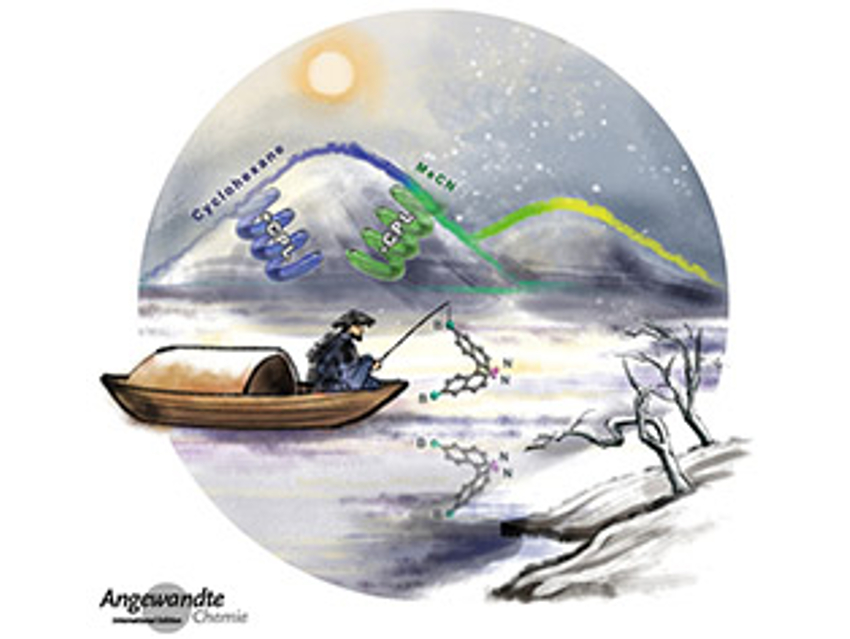In this issue, B. L. Pentelute et al. review arylation chemistry for bioconjugation. How can this be applied to modify peptides, proteins, sugars, and nucleic acids? The Minireviews deal with emerging applications of nanotechnology for the control of cell-surface receptor clustering (J. Li et al.) and mechanisms of plasmon chemistry on metal catalysts (E. Kazuma, Y. Kim). In an Essay, I. P. Beletskaya and V. G. Nenajdenko celebrate the 150th anniversary of the Markovnikov rule.
In the Communications section, C.-H. Zhao et al. present a versatile binaphthyl building block for temperature-dependent dual fluorescence and switchable circularly polarized luminescence (see picture). G. Pieters et al. found an efficient route to deuterated and tritiated nucleobase pharmaceuticals and oligonucleotides using isotope exchange. T.-S. Mei et al. succeeded in the nickel-catalyzed thiolation of aryl and heteroaryl halides through electrochemistry. N. W. Mitzel et al. synthesized a neutral geminal tin/phosphorus frustrated Lewis pair.
- Angewandte Chemie 15/2019: Versatile Building Blocks,
Angew. Chem. Int. Ed. 2019, 58 (15).



